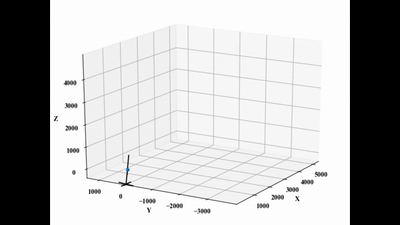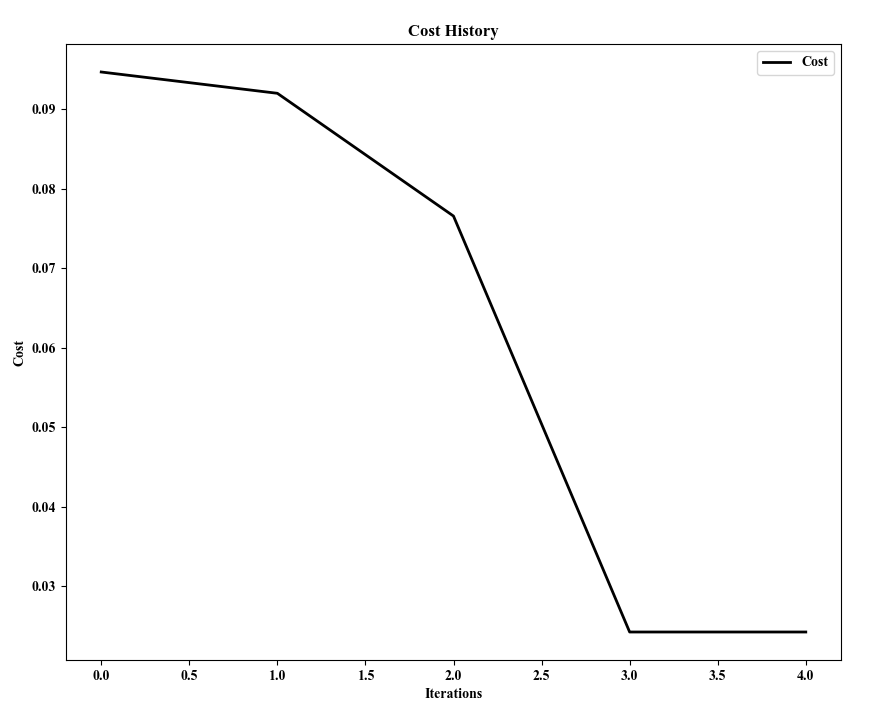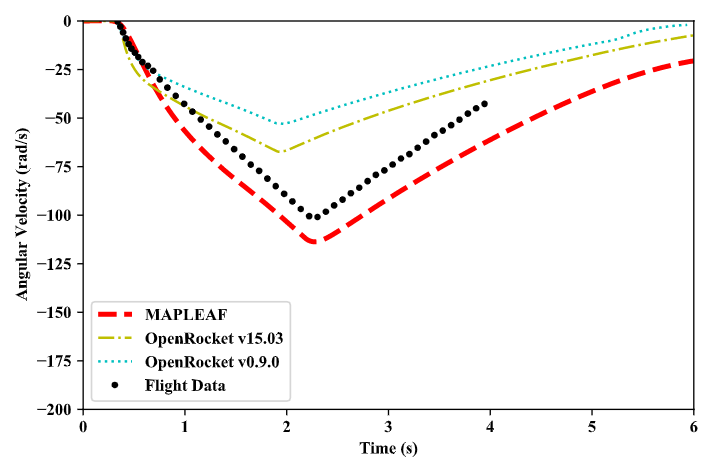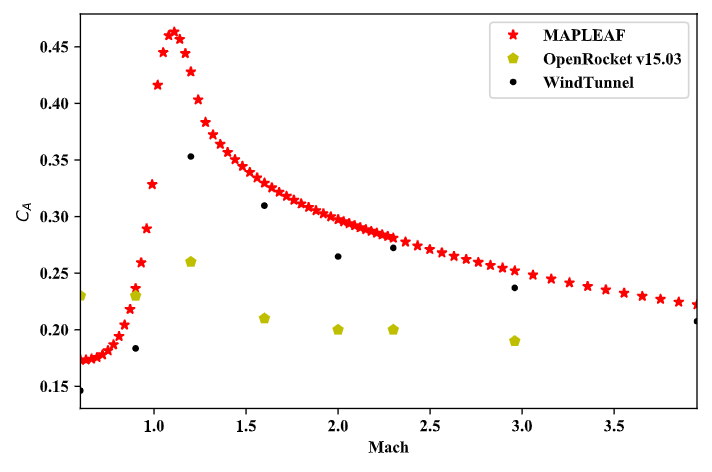Prerequisites:
- Python 3.6+ (64-bit)
- Linux/WSL: install python3.X-dev package (includes python header files for Cython)
- C/C++ compilers OR an existing installation of Cython
- Windows: install visual studio build tools or MinGW
- (Recommended) A Python virtual environment. See README_Dev.md
$ pip install MAPLEAF
Unit tests:
$ python -m unittest -v
Regression tests:
$ mapleaf-batch
See README_Dev.md for more information, or the verification and validation section of the code documentation for the expected results of the regression tests.
Contributions are welcome. To learn about the code, have a look at README_Dev.md, and the code documentation website
$ mapleaf path/to/SimDefinitionFile.mapleaf
Sample simulation definitions: MAPLEAF/Examples/Simulations
Example cases be run with just the case name: $ mapleaf NASATwoStageOrbitalRocket
This is the same as running: $ mapleaf MAPLEAF/Examples/Simulations/NASATwoStageOrbitalRocket.mapleaf from MAPLEAF's install location
Help: $ mapleaf -h
Brief overview below. More info, and definitions of all possible options in: SimDefinitionTemplate.mapleaf
Format is a simple key-value syntax similar to JSON or YAML.
Dictionaries can be nested arbitrarily deeply and are brace-delimited.
Keys and values in a dictionary are separated by the first whitespace in their line
No multiline values
Example:
SimControl{
timeDiscretization RK45Adaptive
TimeStepAdaptation{
controller PID
PID.coefficients -0.01 -0.001 0
targetError 0.0001
}
}
Code folding and syntax highlighting are helpful in maintaining a file overview:
The possible top level dictionaries are 'Optimization', 'MonteCarlo', 'SimControl', 'Environment', and 'Rocket'.
Of these, only the 'Rocket' dictionary is strictly required to run a simulation, and defines the rocket's initial position/velocity and the inertial/aerodynamic/control models used to simulate it.
The rocket is defined by nested subdictionaries, where the first level of nesting defines the rocket's stage(s) and the second level defines the component(s) in each stage:
Default values from the defaultConfigValues dictionary in MAPLEAF/IO/SimDefinition.py will fill in for omitted keys. Most defaults match the values in SimDefinitionTemplate.mapleaf.
Depending on the options specified in the SimControl dictionary, MAPLEAF will output:
-
Detailed tabulated simulation position, component force, aerodynamic coefficient and control logs (see SimControl.loggingLevel):
-
Flight path visualizations (see SimControl.plot - Mayavi is required to render these ones showing the Earth)

-
Plots of any logged parameter (see SimControl.plot or --plotFromLog command line option)
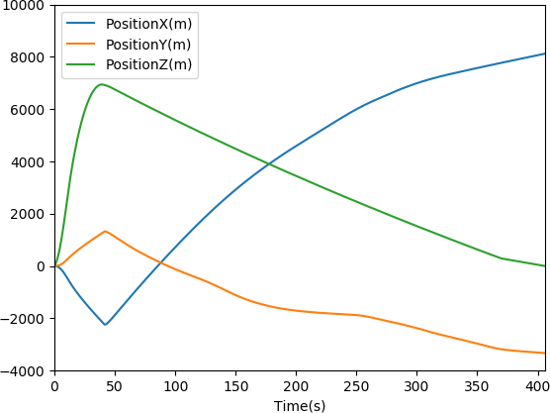
Monte Carlo simulations propagate uncertainties in simulation inputs through to simulation outputs.
Any scalar or vector parameter in simulation definition files can be made probabilistic by adding a second parameter with _stdDev appended to the name:
To execute a batch run of this now-probabilistic simulation, create the top-level 'Monte Carlo' dictionary (see SimDefinitionTemplate.mapleaf)
Then, MAPLEAF can produce distributions of outputs like landing locations:
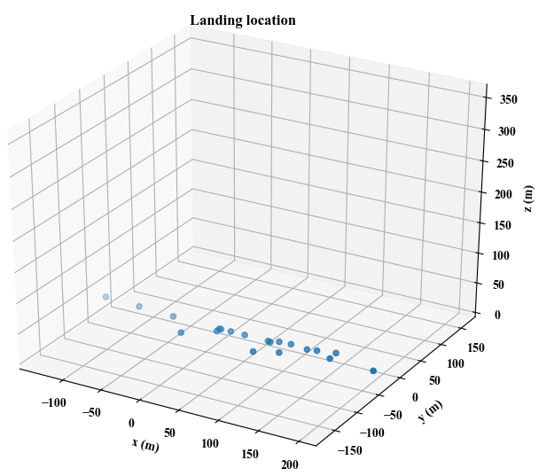
MAPLEAF uses pyswarms to optimize arbitrary scalar parameters according to arbitrary cost functions using Particle Swarm Optimization. To define an optimization problem, include the top-level 'Optimization' dictionary (see SimDefinitionTemplate.mapleaf):
Pyswarms will produce a plot of the optimization results after completion:
Automates running and post-processing groups of cases.
To run: $ mapleaf-batch path/to/batchDefinitionFile
For help: $ mapleaf-batch -h
Provides ability to automate production of detailed plots of MAPLEAF's results compared to verification/validation data, and to run Wind-Tunnel style aero-sweep simulations:
Used for regression and verification/validation testing in MAPLEAF.
See batchRunTemplate.mapleaf for complete batch interface definition and regressionTests.mapleaf for examples.
To run the regression/verification/validation test suite, check out README_Dev.md
To run Monte Carlo or Optimization simulations in parallel:
mapleaf --parallel MonteCarlo.mapleaf
MAPLEAF's parallelization is implemented using ray.



